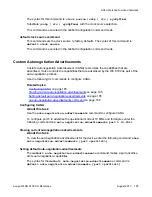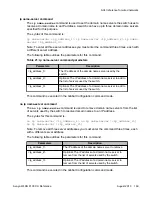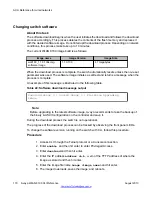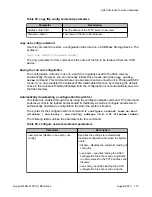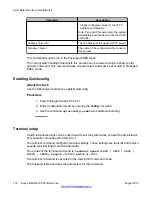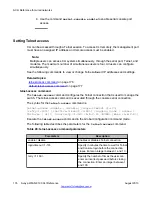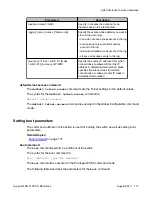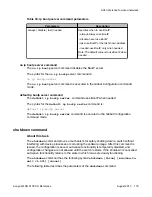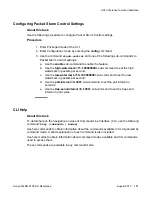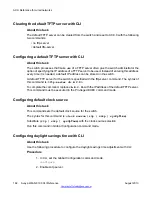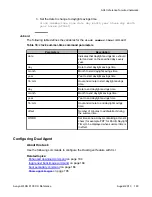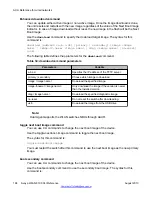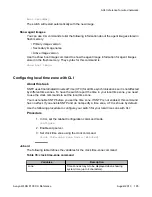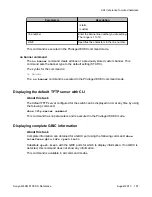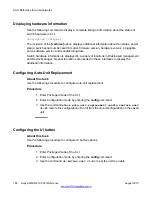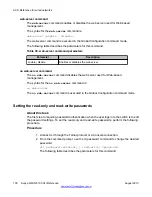
Table 29: boot command parameters
Parameters
Description
default
Reboot the switch and use the factory default
configurations
partial-default
Reboot the switch and use partial factory default
configurations
Note: When you reset to factory defaults, the switch retains the last reset count and reason for
last reset; these two parameters do not default to factory defaults.
Defaulting to BootP-when-needed
The BootP default value is
BootP-when-needed
. This enables the switch to be booted and
the system to automatically seek a BootP server for the IP address.
If an IP address is assigned to the device and the BootP process times out, the BootP mode
remains in the default mode of BootP-when-needed.
However, if the device does not have an assigned IP address and the BootP process times
out, the BootP mode automatically changes to BootP disabled. But this change to BootP
disabled is not stored, and the BootP reverts to the default value of
BootP-when-needed
after rebooting the device.
When the system is upgraded, the switch retains the previous BootP value. When the switch
is defaulted after an upgrade, the system moves to the default value of
BootP-when-
needed
.
See the following CLI commands to configure BootP parameters.
Related topics:
default ip bootp server command
on page 179
ip bootp server command
The
ip bootp server
command configures BootP on the current instance of the switch or
server. This command is used to change the value of BootP from the default value, which is
BootP-when-needed.
The syntax for the
ip bootp server
command is:
ip bootp server {always | disable | last | needed}
The
ip bootp server
command is executed in the Global Configuration command mode.
The following table describes the parameters for this command.
ACLI Reference for wired networks
178 Avaya WLAN 8100 CLI Reference
August 2013


